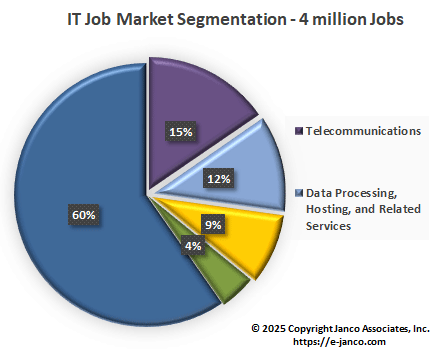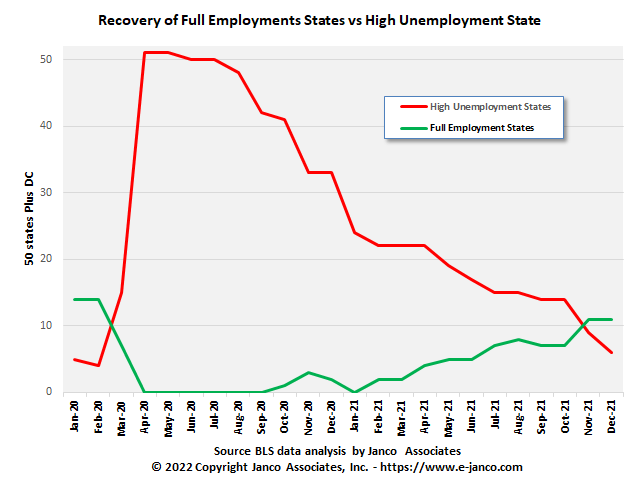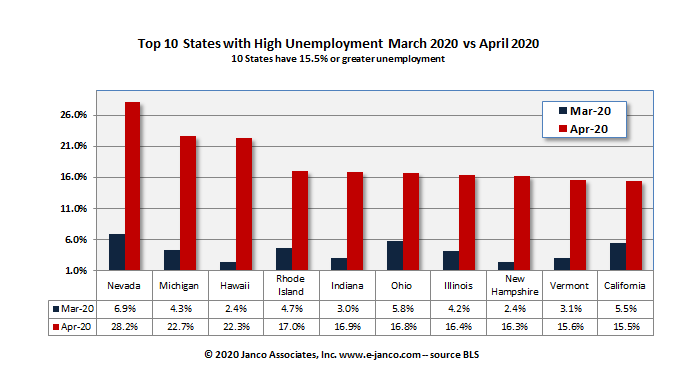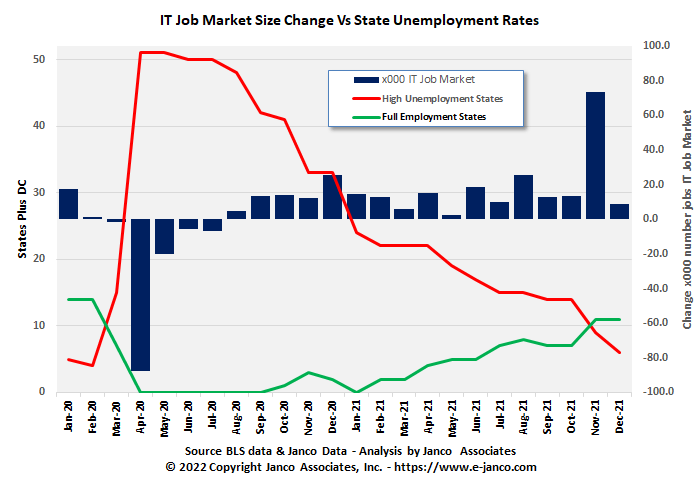Employment Recovery from Covid took 21 months
The IT Job market in the US is driven by the overall economy of the US and world markets
Looking at the employment picture, the recovery took 21 months from the inception of the pandemic in the US to the spring of this year. Interestingly, the states (including DC) that had the lowest unemployment rates pre-pandemic were the first to recovery. States that had unemployment rates recovered at a much slower pace.
During the peak of the Covid employment crisis, April to September 2020, all the states including the District of Columbia had unemployment rates that peaked at well over 10% and some in the mid to high 20% ranges as depicted in the chart below which we published in May of that year.
Each state had its own set of circumstances which set the unemployment rate for that state. Factors included the starting unemployment rates, the length of the “shut-downs”, and the types of industries within each of the states. States with larger numbers of non-manufacturing based jobs were able to recover more quickly.
IT Job Market Relationship to Unemployment Rates
There is a direct relationship rate of change in the job market for IT Pros to the overall state unemployment rates. The greatest losses occur the month the overall unemployment rate increases (April 2020). Then the is increased demand once the over all unemployment stabilizes (November 2021).
It seems that the states that were the most aggressive in shutting down took the longest to recover. That is regardless of the number of Covid cases, hospitalizations, and/or deaths which is a separate discussion. Now that the worst of the pandemic is over, the economy and IT Pros are going to be faced with several challenges.
- Supply chain shortages – When companies and countries shut down and the high dependence on “just in time” manufacturing and distribution created massive shortages of not only finished products but also of raw materials. That was exacerbated by a shortage of containers from overseas, rail cars at terminals and trucking capacity. It could take several quarters for the distribution process to be back in sync.
- High Inflation – This due to a number of factors. The first the rapid increase in the US money supply with the Fed printing money and supporting the process by increasing its balance sheet. The second was the changing of “exploration, drilling and distribution” policies implemented by those in favor of green energy policies and the war in Ukraine. Lastly the disparity in the supply demand model due to shortages and the inherent increase in prices.
- Change in Employer/Employee relationships – The move from work in the office to work from home (WFH) altered the view of many employees that they had to go into the office to get their “white collar” jobs done. Over the past two decades, manufacturing moving offshore has created an environment where many lower-level positions do not require individual workers be on a factory floor doing something. Rather they are in offices doing administrative jobs moving products from raw to finished goods which are shipped directly to customers without the need to touch or handle the work in process and finished products.
- Impact of trade sanctions and shortages of food stock and raw materials from the Ukraine and Russia. It will take some time to see what the effects of the conflict are on the rest of the world. Companies and countries will focus on productivity. Shortages will mean there will be a requirement for fewer workers. That could portend a cutting short of the post pandemic recovery and likely a recession.
The next few months will be interesting and will impact the overall employment levels. That will include IT professionals whose job prospects we monitor closely.

The size of the Data Processing, Hosting, and Related Services market has not grown as fast as the Computer systems design and related services portion of the overall IT Job Market
Read on IT Hiring Kit Order IT Hiring Kit







